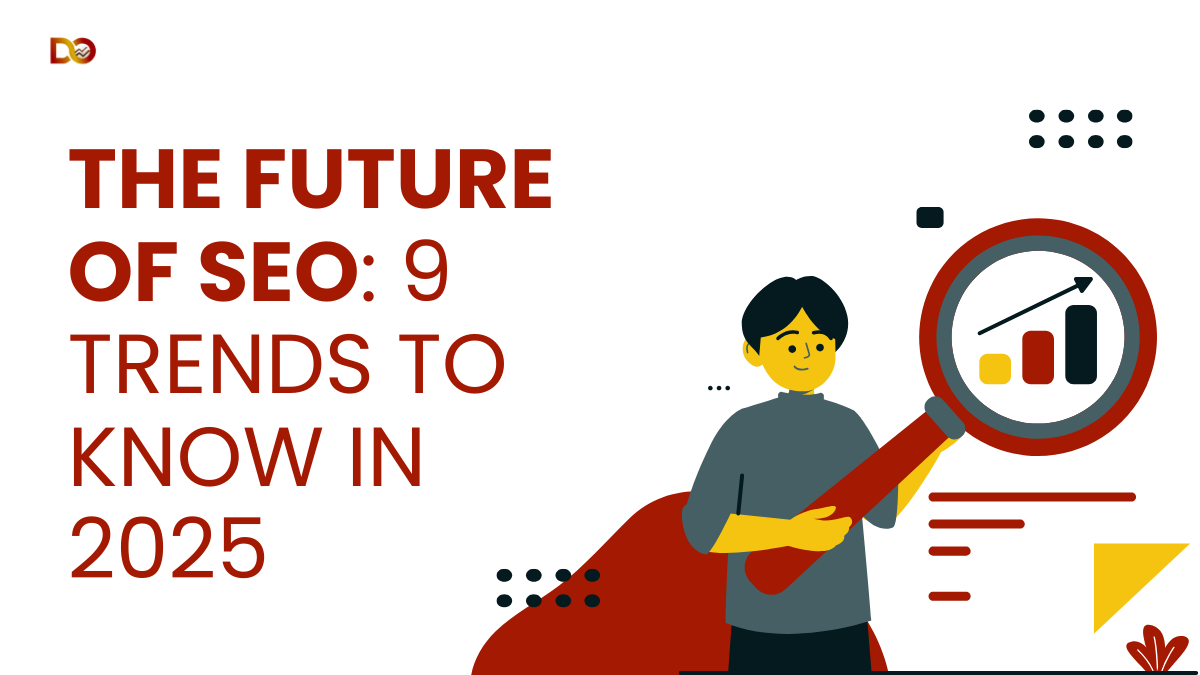Search is evolving rapidly, and 2025 marks a pivotal shift in how users interact with information online. With the rise of generative AI, answer engines, voice assistants, and visual search, the traditional keyword-based approach to SEO is no longer enough. Today’s search experience is becoming more intelligent, personalized, and dynamic—extending well beyond Google’s standard results page.
For forward-thinking marketers and digital strategists, this transformation presents both challenges and opportunities. Success in 2025 will depend on understanding not only how to rank, but also how to truly meet user intent, enhance the experience, and drive meaningful engagement across multiple platforms.
Below are 9 critical SEO trends shaping the digital landscape in 2025 along with strategic insights to help businesses stay competitive and visible in this new era of search.
- AI-Powered Search Summaries (Generative SERPs)
Google and other engines are rolling out AI-generated answer boxes on the results page. These “Search Generative Experiences” (or AI Overviews) pull in information from multiple sites to answer queries directly. Early data shows they now appear in a sizable share of searches. For SEOs, this means optimizing content not just for ranking, but also to serve as a source for those AI answers. Write clear, concise answers and use structured lists or Q&A sections so AI tools can easily find and quote your content. Think beyond classic paragraphs – bullet points, definitions, and one-sentence summaries can land in AI answer boxes and keep your brand visible even if fewer people click through.
- Answer Engines & AI Search Assistants
Non-Google search tools are gaining traction. Users are increasingly asking AI chatbots and answer engines (like ChatGPT, Perplexity, and others) instead of traditional search engines. Though Google still dominates (~90% market share globally), these AI platforms are growing. For example, Perplexity AI has millions of users and regularly cites web content in its answers. This trend means Answer Engine Optimization (AEO) is emerging. Brands should monitor these platforms, experiment with posting helpful answers where allowed, and ensure their content can be cited by AI. Publishing accurate, expert content on topics relevant to common questions can help you earn a spot in AI-generated responses and drive new referral traffic from these up-and-coming “search” sources.
- User-Intent and Topic Clusters (User-Centric SEO)
Plain keyword stuffing is dead. AI and modern search put user intent first. Google’s AI can understand natural language, so exact keyword matches are less important than covering a topic thoroughly. Expect more “cluster” or “hub” content: instead of one massive page trying to hit every related keyword, publish several focused pieces that each answer a specific question, then interlink them. This is sometimes called “ranch-style SEO”. Each micro-article should address a clear intent (who, what, why, how) so that it can be easily picked up by search algorithms or AI tools. For example, instead of one 5,000-word article on “digital marketing”, create separate pages for “what is digital marketing?”, “benefits of digital marketing”, “digital marketing strategies”, etc., all link together. This helps capture featured snippets and answer-box placements while giving users concise answers. In 2025, prioritize serving the searcher’s exact query – answer their question faster and more directly.
- Voice & Conversational Search
Voice assistants (smartphones, smart speakers, car systems) are now a major search channel, and they handle queries very differently from text searches. People speak in full questions and casual language (“Hey Siri, what’s the best project management tool for remote teams?”) rather than typing keywords. In 2025, optimizing for voice means writing content that sounds natural when read aloud. Use a conversational tone, complete sentences, and question-and-answer formats (FAQs work great). Make sure to include schema markup for Frequently Asked Questions or How-To steps, as these often trigger spoken answers. Also, optimize for local and personal context – voice queries often include “near me” or personal phrases. Finally, speed counts: many voice searches occur on mobile, so ensuring fast page load times and quick answers (via clear headers and bullet lists) will improve voice SEO performance.
- Visual & Image Search
Image-based search is surging. Google Lens and other visual search tools already see billions of searches per month. Younger audiences especially use their camera to shop or identify products. To ride this wave, ensure every image on your site is fully optimized: use descriptive file names, detailed alt text, and relevant captions. For e-commerce, include multiple clear photos per product (from different angles) with accurate metadata. Brands can also create visual answers: for instance, infographics or charts that directly answer questions. As image AI improves, the engines will interpret pictures more like people do. Think of each image as a piece of content – the better it is, the more likely it is to appear in Google Lens or image carousel results. Also consider image-rich platforms (Pinterest, Instagram) as part of your search strategy – ensure those images link back to useful content on your site or blog.
- Video Content Optimization
Video continues its dominance in search results, especially on platforms like YouTube (the world’s second-largest search engine). In 2025, having video content (tutorials, explainers, webinars) can massively boost visibility. But raw video isn’t enough – optimize every video post just like a page. Use keyword-rich titles and descriptions, add transcripts or captions, and include them in a video sitemap. Even on-page video embeds should have good context: a brief intro above the video or a summary below can help Google understand the content. For live and short-form videos (like- Instagram Reels), use trending hashtags and keywords, and link back to your website or blog for full details. Because search is multimedia now, integrating video into blogs or product pages can capture attention and improve dwell time. Remember to fast-load videos and mobile-friendly players, as these are critical for good rankings on smaller devices.
- Zero-Click & Featured Snippets Strategy
Search is increasingly zero-click: more than half of queries now get answered directly on the SERP via featured snippets, knowledge panels, maps, or embedded videos. While this reduces organic click-throughs, it doesn’t mean SEO is dead. Instead, optimize to own those rich results. That means structuring content to match snippet formats: definitions, tables, bullet lists, step-by-step instructions, or short concise answers. Use headings and question phrases (e.g., “How to…” “What is…”) so Google can easily grab the text. Also, claim and optimize your business listings (Google Business Profile) for local/knowledge panels, and encourage reviews so those star snippets attract clicks. Supplement your strategy by measuring conversions (form fills, phone calls) coming directly from search impressions, not just clicks, and refine content accordingly.
Read more : Google Search Updates 2025: What You Need to Know
- Global, Local, and Multilingual SEO
Even with global trends, “where” matters. Multilingual content and geo-targeting will remain crucial in 2025 as internet access grows worldwide. For global brands, optimize language versions of your site properly and research keywords in each market’s language. Search engines like Yandex dominate certain regions; localize your strategy accordingly. Meanwhile, for local businesses everywhere, “near me” search and map packs are bigger than ever. Ensure your Google Business (or local listings) are filled out with accurate info and that local keywords (city names, neighborhoods) are integrated into your content. Voice and mobile searches make local context critical – a family searching for “best noodles near me” in New York City or Berlin expects top local results. Treat local SEO as part of global SEO, tailoring content to each audience and region to capture that intent.
- AI Tools and Automation in SEO Workflow
AI isn’t just changing search results, it’s changing how we do SEO. By 2025, using AI for tasks like keyword research, content outlines, meta-tag optimization, and site audits will be commonplace. Tools that generate content drafts, suggest title tags, or analyze competitor pages using machine learning are becoming more accurate. Strategic SEO teams will use these tools to speed up processes – for example, automatically generating monthly SEO reports or running continuous technical audits without manual effort. However, human oversight remains essential to ensure quality and creativity. The trend is AI-human collaboration: let AI handle bulk tasks (like scanning thousands of pages for errors), while humans focus on strategy and creativity (creating quality content, and making UX improvements). Also, keep an eye on AI analytics: predictive insights (e.g. content gap suggestions or rank forecasting) can give a strategic edge.
Embrace AI as an integrated collaborator, but remember that original ideas and relationships with customers are still human jobs!
As these trends continue to reshape how search works in 2025, businesses will need agile, forward-thinking strategies to stay competitive. At Devoptiv, we help brands navigate this evolving landscape through data-driven, AI-aligned SEO services that enhance visibility, elevate user experience, and drive sustainable growth across global search ecosystems.







